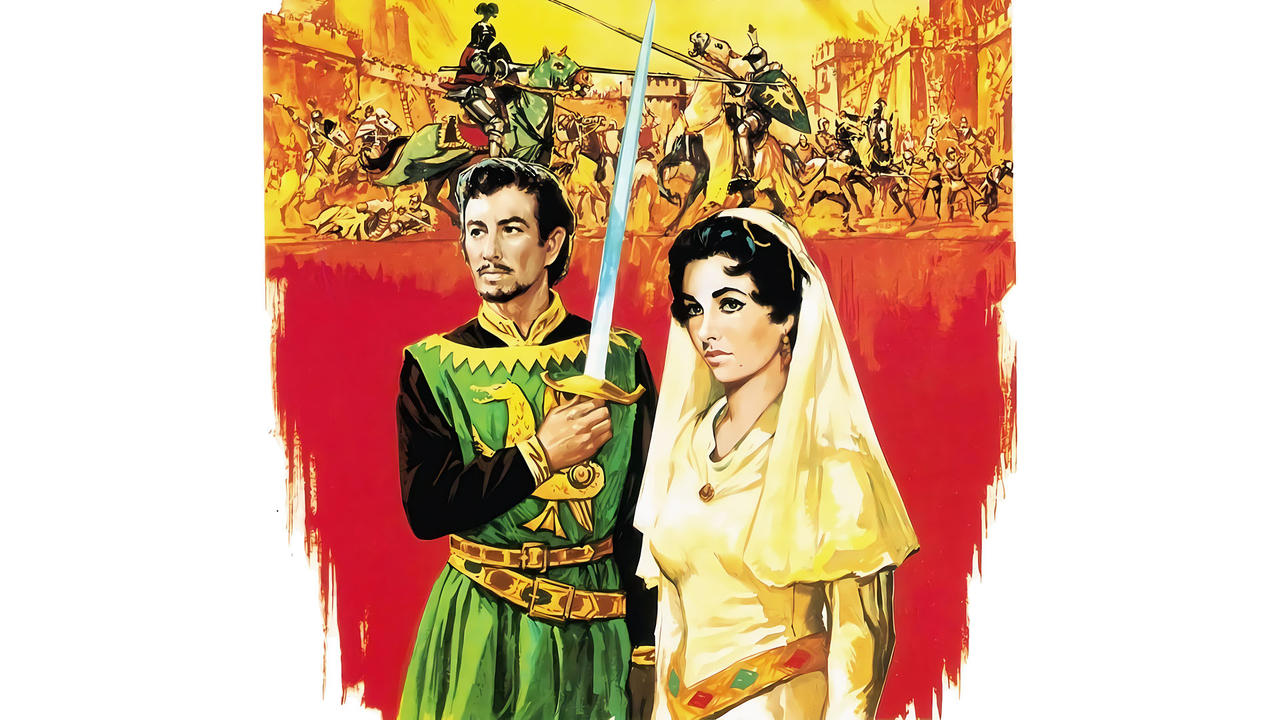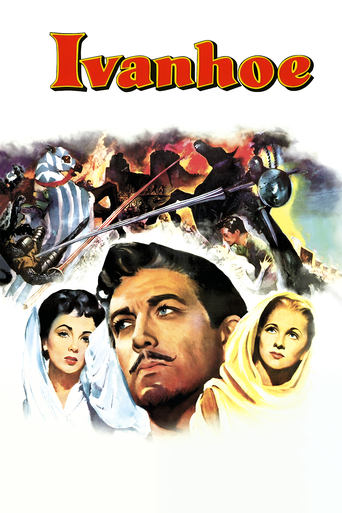

IVANHOE is a film I hadn't watched in many decades. It was surprisingly good. Robert Taylor stars as Walter Scott's hero, albeit in a much-revised story, in the days of Richard the Lionheart and his snarky brother John. While Taylor is 20 years older than Scott's hero, he's fine as within the context of the film. He's a rather haggard knight returned from the crusades and from finding where Richard is being held captive. John, issuing the fake news of the day, justifies his reign by saying Richard is dead. Anyway, England is in the midst of a Saxon vs. Norman bit of unrest, with the Saxons being subjugated by the Normans. Awaiting Ivanhoe all these years is the faithful Rowena (a stunning (Joan Fontaine) who is the ward of his father (Finlay Currie). About the time of Ivanhoe's return, we all see the return of the evil Normans, Bois-Guilbert and De Bracy (George Sanders and Robert Douglas). They have a mash up in Currie's house, but no one recognizes the much-changed Ivanhoe. Into this plot comes the displaced Jew Isaac (Felix Aylmer) and his daughter Rebecca (a stunning Elizabeth Taylor, though too young for the role). While Isaac may be a money lender (a term of much derision in medieval times), it's not a term used in the film. Both women are in love with Ivanhoe, but Bois-Guillbert lusts after Rebecca. The plot works toward the ultimate jousting match between Ivanhoe and Bois-Guilbert and of course the return of Richard. The film, directed by Richard Thorpe, moves along nicely and was nominated for a best film Oscar. Others in the cast are Emlyn Williams as the fool-turned squire, Guy Rolfe as the oily John, Norman Wooland as Richard, May Hallatt as Elgitha, Harold Warrender as Robin of Locksley, and Sebastian Cabot as his cohort (not named Friar Tuck).One of the big negatives is the sets. Thirty years after the meticulous and magnificent Marion Davies film WHEN KNIGHTHOOD WAS IN FLOWER, this MGM Technicolor opus looks skimpy by comparison. While the castle exteriors are OK, the interiors are not. And the jousting field is embarrassingly cheesy. The film also dissolves into an ambiguous romantic love story, while Scott's story embraced the concept of "courtly love." In the end, George Sanders and Emlyn Williams take the honors.
... View MoreIvanhoe is a historical novel written by Sir Walter Scott in the early 19th century. The book itself is amazing and there is no need to say anything further about it. This movie on the other hand shows, how Hollywood production was able to cut out, twist and ruin a great story, presenting it in the end as a butchered,naive and twisted movie, such as this one. If you watch only the movie, then you wont know what I am writing about , so I do recommend to read the book, preferably after the movie,because if you do it opposite,maybe you wont have the stomach for the movie. It is a greatest shame,how some main characters were cut out, how story-line doesn't follow anything and mistakes made in the "historical" movie are just unforgivable.
... View MoreMGM shot Ivanhoe in Britain and gone for that old fashioned Hollywood adventure in the same vein as Errol Flynn's Robin Hood but less successfully.Baddie Prince John is scheming for the throne of England as his brother King Richard is held for ransom.It is an amiable rip roaring adventure, Walter Scott's classic story is distilled, Robert Taylor is too stiff as the Saxon knight who dislikes the Normans. Elizabeth Taylor and Joan Fontaine provide the allure as two women of different faiths that have fallen for him.George Sanders is the hissable villain, the champion knight of King John but his love for Jewish Rebecca is sincere. Guy Rolfe is having a hoot as the despicable King John.The film was made in 1952 and there is some allusion to McCarthyism.
... View MoreGreat adaptation of Sir Walter Scott's classic novel. Interesting plot, filled with chivalry, knights doing battle and damsels in distress, Good, swashbuckling, action. Robert Taylor was so-so in the lead role. Just seemed too American for the role. On the other hand, the supporting cast put in great performances: Elizabeth Taylor, Joan Fontaine, George Sanders. Elizabeth Taylor is incredibly captivating as Rebecca. Joan Fontaine isn't too bad on the eye either...One of the best knights-in-armour movies you'll see.
... View More